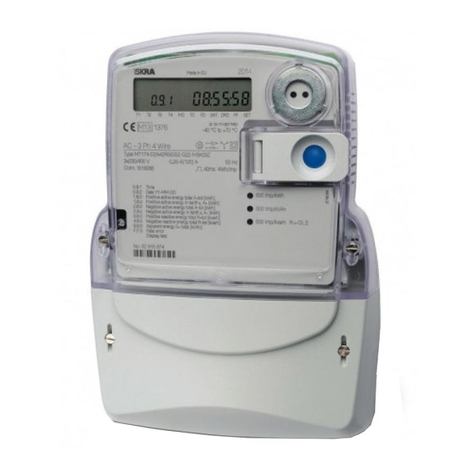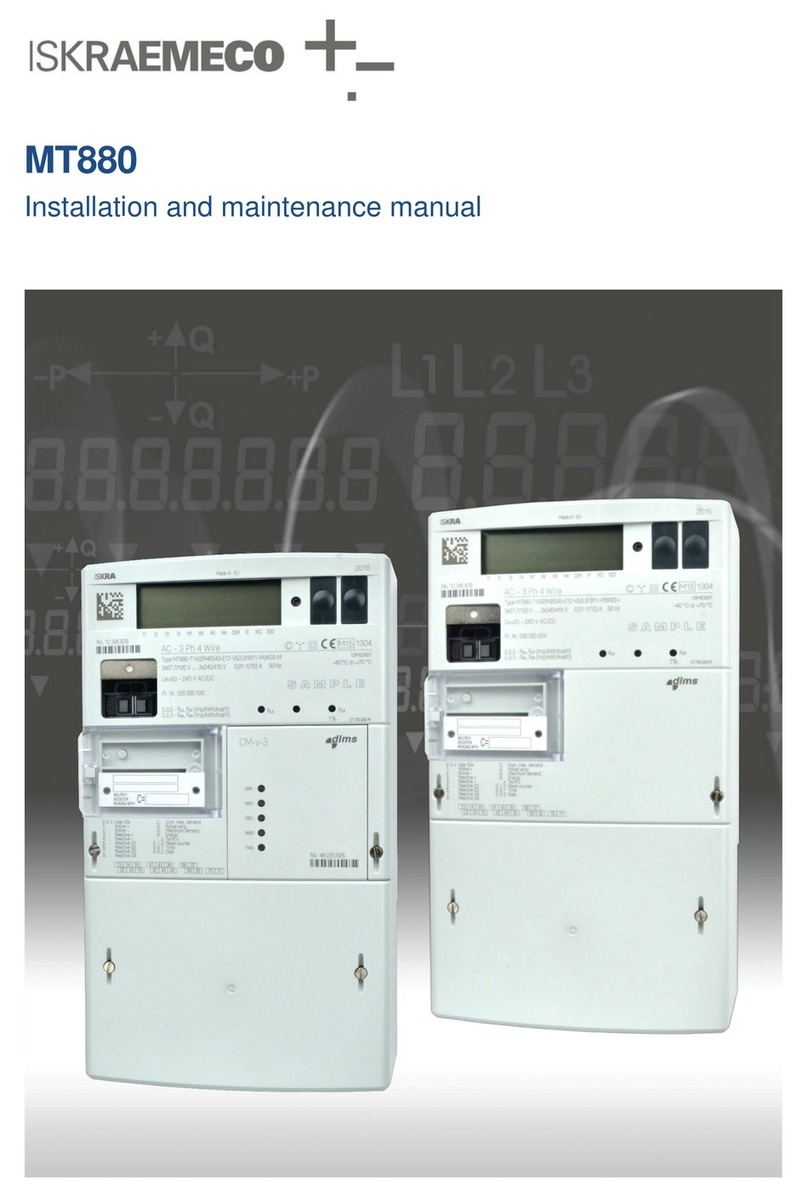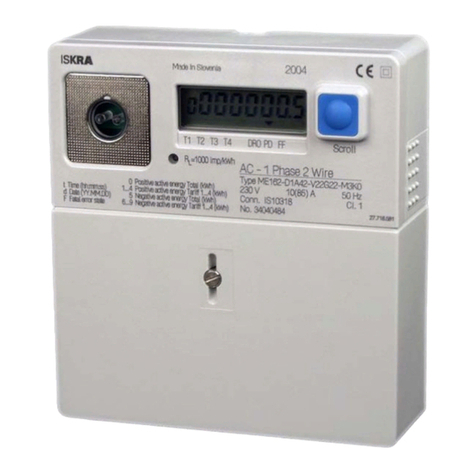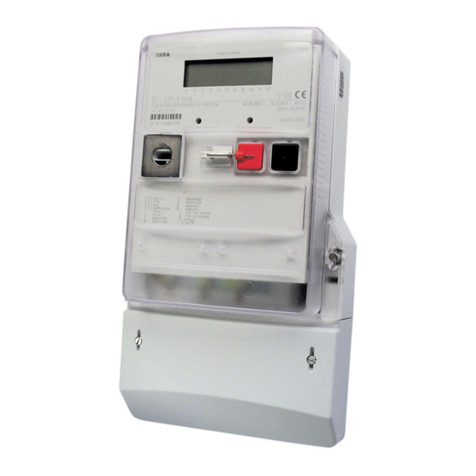
KOMAR DOBERLET B0024445
Mx37y TEHNIČNI OPIS
5.6.2009
Mx37y TECHNICAL DESCRIPTION
020611325_003_000_AD.doc
Mx37y
LAD
020.611.325
2/45
3.
Content:
Revision history.................................................... 3
Mx37y – Single- and Three-phase electronic
meters.................................................... 4
1.
Energy measurement and registration7
1.1
Multi-tariff registration................................ 7
1.2
Power measurement ................................. 7
1.3
Load-profile................................................ 7
1.4
Supplied energy or power limitation.......... 7
1.5
Code red.................................................... 8
1.6
Prepaid functionality.................................. 8
2.
Meter appearance (ME37y) ................ 10
2.1
Meter case (ME37y)................................ 10
2.2
Overall and fixing dimensions (ME37y)... 11
2.3
Meter configuration (ME37y)................... 11
2.4
Metering system (ME37y) ....................... 12
3.
Meter appearance (MT37y)................. 13
3.1
MT371….................................................. 13
3.2
MT372….................................................. 13
3.3
Meter case (MT37y) ................................ 13
3.4
Overall and fixing dimensions (MT371)... 15
3.5
Overall and fixing dimensions (MT372)... 16
3.6
Meter configuration (MT37y)................... 17
3.7
Metering system (MT37y)........................ 17
4.
Meter configuration ............................ 19
4.1
Power supply unit.................................... 19
4.2
Microcontroller with FRAM...................... 19
4.2.1
Load-profile recorder............................ 19
4.2.2
Log-book .............................................. 19
4.2.3
Keeping of billing results...................... 20
4.3
Real-time clock (RTC)............................. 20
4.3.1
Time-of-use registration ....................... 20
4.3.2
Maximum demand................................ 20
4.4
Liquid Crystal Display – LCD................... 20
4.4.1
Data display.......................................... 20
4.4.2
Signal flags........................................... 21
4.5
LED.......................................................... 21
4.6
Push-buttons ........................................... 22
4.6.1
RESET and SCROLL push-button....... 22
4.6.2
Manual meter billing reset.................... 24
4.7
Communication channels........................ 24
4.7.1
Optical port – IR communication interface
25
4.7.2
DLC modem (Mx371)........................... 25
4.7.3
Integrated GSM/GPRS communication
interface with antenna (option) (Mx372)25
4.7.4
RF communication interface (ME374) . 25
4.7.5
RS485 communication interface (option)
(Mx372)................................................ 26
4.7.6
M-Bus communication interface (option)26
4.7.7
Readout via built-in communication
interfaces.............................................. 26
4.8
AMR readout............................................ 26
4.9
Inputs and outputs (ME37y) .................... 27
4.9.1
Alarm inputs ......................................... 27
4.9.2
Load control output............................... 27
4.10
Inputs and outputs (MT37y)..................... 27
4.10.1
Inputs .............................................. 28
4.10.2
Outputs ........................................... 28
5.
Additional meter functions ................ 29
5.1
On request reading of E-meter................ 29
5.2
Billing registers reading of E-meter .........29
5.3
Scheduled reading of E-meter................. 29
5.4
Historic reading of E-meter...................... 29
5.5
On request reading of G-meter................ 29
5.6
Billing registers reading of G-meter.........29
5.7
Scheduled reading of G-meter ................ 29
5.8
Historic reading of G-meter ..................... 29
5.9
Device status ........................................... 29
5.10
Tariff structure configuration of E-meter.. 30
5.11
Remote customer connection/disconnection
30
5.12
Load-profile reading of E-meter............... 30
5.13
Load-profile reading of G-meter .............. 30
5.14
Load-profile configuration of E-meter...... 30
5.15
Load-profile configuration of G-meter...... 31
5.16
Power quality ........................................... 31
5.17
Power failure registration......................... 31
5.18
Alarms...................................................... 31
5.19
Commission E-meter............................... 32
5.20
Security.................................................... 32
6.
Data protection.................................... 33
7.
Meter connection procedure ............. 34
7.1
Connection procedure of GSM/GPRS
communication interface.......................... 34
7.2
Connection procedure of RF communication
interface................................................... 34
8.
Accessory for meters managing....... 35
9.
Meter maintaining ............................... 36
10.
Anti-fraud protection .......................... 37
10.1
Position of the seals ................................ 37
10.2
Wire seals................................................ 37
11.
Front plate ........................................... 38
12.
Meter connection ................................ 39
12.1
Meter connection of ME37y meters......... 39
12.2
Communication interface – M-Bus .......... 39
12.3
Meter connection of MT37y meters......... 39
13.
Technical data..................................... 41
14.
Type designation ................................ 44

































